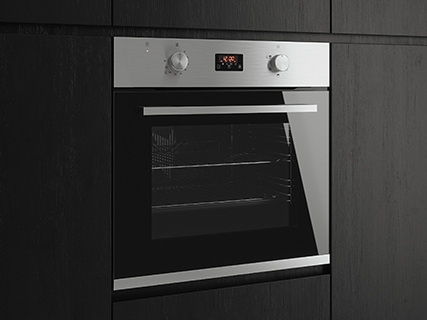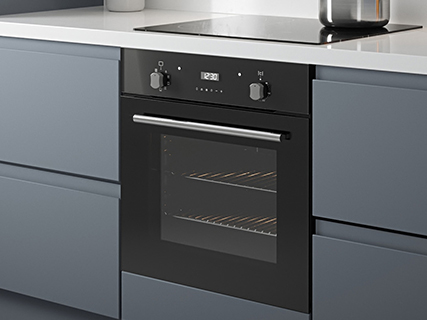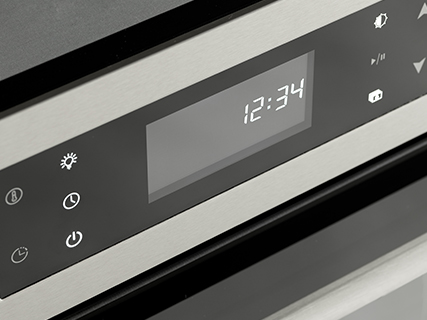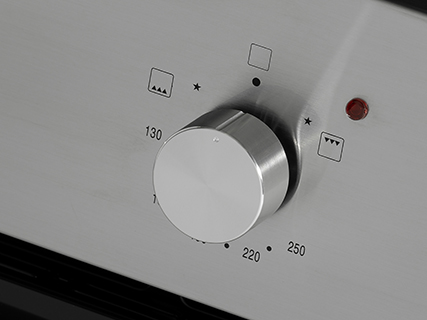Voracio Test Page
How does an oven fit?
Our single ovens offer the flexibility to be installed either in a column or under the worktop, providing versatile placement options. Our double ovens require installation in a column configuration, ensuring optimal functionality and performance.

Column
The oven is conveniently positioned inside a column cabinet, offering an enhanced culinary experience. This clever arrangement eliminates the need for bending, allowing effortless manoeuvring of dishes in and out of the oven. This feature is particularly beneficial for handling substantial cookware with ease.

Built Under
The oven is ingeniously integrated beneath the worktop, effortlessly blending in with the surrounding kitchen cabinets for a flawless aesthetic. This clever design ensures a seamless and cohesive appearance, enhancing the overall visual appeal of the kitchen space.
Oven fuel types
Built-in ovens are designed to accommodate different fuel types, providing options to suit various cooking preferences.

Electric
Electric ovens are widely preferred for their exceptional performance. They excel in distributing heat evenly, guaranteeing consistent and reliable cooking results. Moreover, electric ovens boast precise temperature control, enabling accurate adjustments for achieving optimal cooking conditions. With their ability to maintain precise temperatures, they offer a reliable and consistent cooking experience, making them a popular choice among home chefs.

Gas
Gas ovens are renowned for their unique advantages in the realm of cooking. They are favoured by many culinary enthusiasts for their immediate and precise heat control. With a simple turn of the dial, gas ovens quickly reach the desired temperature, allowing for efficient preheating and faster cooking times. Additionally, gas ovens offer excellent moisture retention, ensuring that dishes retain their natural juiciness and tenderness. The moist heat generated by gas ovens is particularly beneficial for baking.
Should I buy a self cleaning oven?
The decision to purchase a self-cleaning oven ultimately depends on your cleaning preferences, budget, and lifestyle. If convenience is important to you and you are willing to invest in an oven that can handle heavy cleaning tasks, a self-cleaning oven may be a worthwhile investment. However, if you prefer manual cleaning methods or have budget constraints, a standard oven without self-cleaning features may suffice.
The three most popular options available are as follows:
Pyrolytic Cleaning: Pyrolytic cleaning is a high-temperature cleaning process that utilises intense heat to burn off and transform food residue and grease into ash. When activated, the oven heats up to extremely high temperatures (typically around 500°C for several hours, reducing the residue to ash. After the cleaning cycle, you can simply wipe away the ash with a damp cloth. Pyrolytic cleaning is effective at removing stubborn stains and residues, but it consumes significant energy and can generate strong odours and smoke during the cleaning process.
Catalytic Cleaning: Catalytic cleaning involves using special catalytic liners or panels on the oven's interior walls. These liners are coated with a self-cleaning material that absorbs and breaks down food splatters and grease when the oven is heated. The catalytic liners work by oxidising the residue at lower temperatures during regular cooking, gradually reducing it to ash. To maintain their effectiveness, catalytic liners need regular exposure to high temperatures, typically around 200-250°C, to burn off the accumulated residue. While catalytic cleaning can help keep the oven relatively clean, it may not eliminate all stubborn stains and may require manual cleaning for thorough results.
Steam Cleaning: Steam cleaning is a gentler and quicker cleaning method that utilises steam and heat to loosen and dissolve food residue. Steam cleaning functions usually require adding water to a reservoir or container within the oven. When activated, the oven generates steam that softens and loosens the residue, making it easier to wipe away. Steam cleaning is typically used for lighter cleaning tasks and is best suited for regular maintenance rather than tackling heavy build-up.
For more on self cleaning ovens check out or in depth guide.
Oven capacity: what is a good size?
Oven capacity refers to the internal volume or space available inside an oven for cooking and baking purposes. The average capacity of a single oven is typically around 60 litres. This means that the oven can accommodate various types and sizes of cookware, including baking trays, casserole dishes, and roasting pans. The generous capacity allows for the preparation of larger meals or multiple dishes simultaneously, making it convenient for families or individuals who enjoy cooking and hosting gatherings. With a 60-litre capacity, you can easily roast a whole chicken, bake multiple trays of biscuits, or prepare a sizeable casserole. The ample space also provides sufficient room for hot air circulation, ensuring even cooking and baking results. Whether you're an avid home cook or a culinary enthusiast, the capacity of a single oven offers versatility and flexibility for your cooking needs.
Frequently asked questions:
Do all ovens have a grill?
Single ovens feature a combined oven and grill within a single cavity, while double ovens offer a main oven along with a separate oven/grill. This configuration provides enhanced flexibility as it allows you to simultaneously grill and oven-cook or cook at two different temperatures within the ovens. With a double oven, you have the convenience of utilizing different cooking functions simultaneously, maximizing efficiency and enabling you to prepare multiple dishes with ease.
Do ovens come with a plug?
Typically, built-in ovens do not come equipped with a plug. These ovens are usually designed to be hardwired into the electrical system of a home or kitchen, necessitating the expertise of an electrician for proper installation. A dedicated circuit is employed to connect the oven to the electrical wiring.
It is worth noting that certain single ovens, however, may come with a plug already attached. These particular models are designed for greater portability and can be conveniently connected to a standard electrical outlet. When considering an oven purchase, it is important to review the specifications and product details to determine whether it includes a plug or requires professional installation.
Can 2 single ovens be stacked?
In most cases, it is not recommended to stack two single ovens on top of each other. Single ovens are not designed or tested for vertical stacking, and doing so can pose safety risks and potentially damage the appliances.
Stacking ovens requires careful consideration of weight, stability, and heat dissipation. Single ovens are typically designed to be installed side-by-side or under the countertop, as specified by the manufacturer's instructions.
If you require additional oven capacity or functionality, it is recommended to consider a double oven unit specifically designed for stacking. Double ovens are designed to be safely stacked vertically and provide the necessary support and ventilation required for safe operation.
